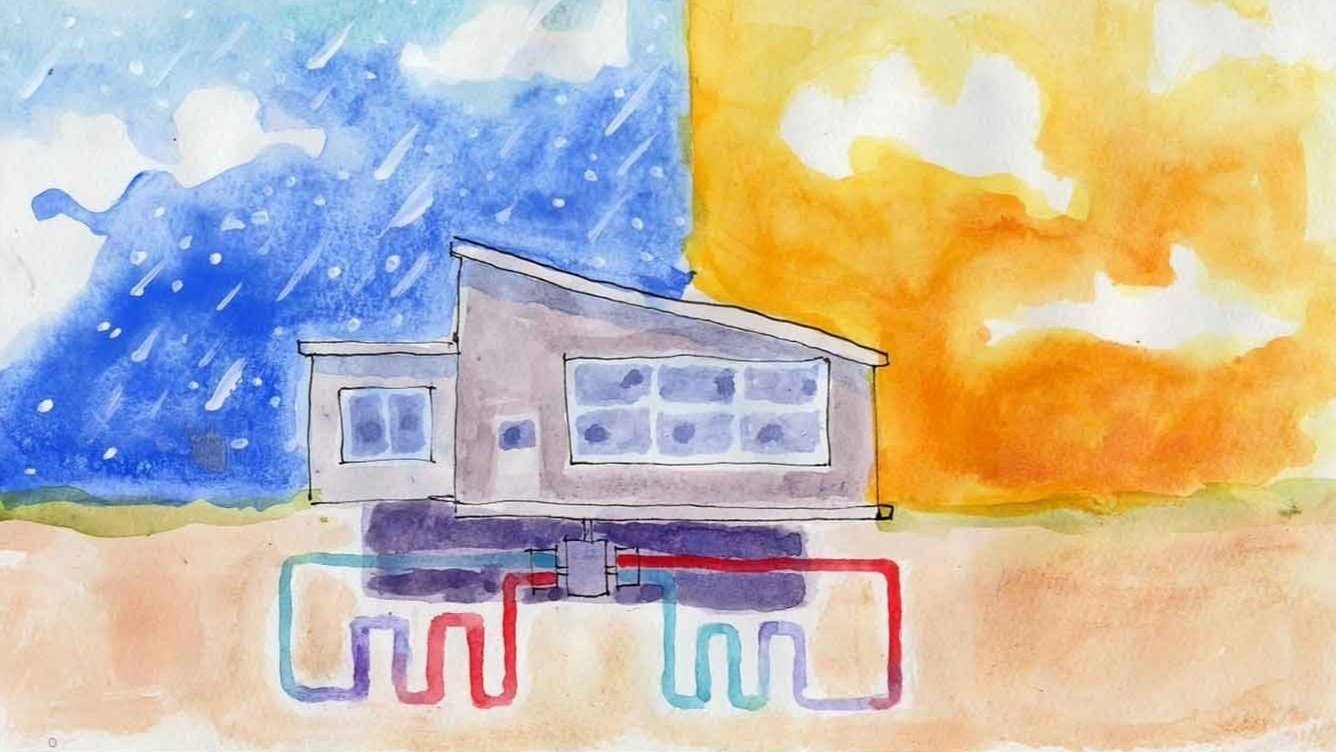
By Amy McVey
How Heat Pumps Work
Water-source heat pumps, ground-source heat pumps, and air-source heat pumps are three types of heat pumps that use different sources of renewable energy to produce heating and cooling for a building.
Water-Source Heat Pumps
WSHPs use a body of water, such as a lake or a well, as the source of heat. They work by extracting heat from the water and transferring it to the refrigerant, which then evaporates and is compressed to a high temperature and pressure. The hot refrigerant is then passed through a condenser, where it transfers its heat to the building, heating it to the desired temperature.
Water-source heat pumps can be classified into two types: open loop and closed loop.
Open Loop Systems: In an open loop system, the heat pump takes in water from a well or lake and uses it to extract heat. The water is then discharged back into the source. Open-loop systems are generally less expensive to install and maintain, but they are more susceptible to contamination and can have a lower thermal efficiency compared to closed-loop systems.
Closed Loop Systems: In a closed loop system, water is circulated in a sealed loop of pipes that are buried in the ground or submerged in a lake or pond. The heat pump uses the circulating water to extract heat, which is then transferred to the building. Closed-loop systems have a higher thermal efficiency compared to open-loop systems, and they are less susceptible to contamination. However, they are more expensive to install and maintain.
Ground-Source Heat Pumps
GSHPs use the ground as the source of heat. They work by extracting heat from the ground using a series of pipes, called a ground loop, that are buried underground. The heat from the ground is then transferred to the refrigerant, which evaporates and is compressed to a high temperature and pressure, and the hot refrigerant is then passed through a condenser, where it transfers its heat to the building.
Air-Source Heat Pumps
ASHPs use outdoor air as their source of heat. They work by absorbing heat from the outdoor air and transferring it to the refrigerant, which then evaporates and is compressed to a high temperature and pressure. The hot refrigerant is then passed through a condenser, where it transfers its heat to the building.
Heat Pump Efficiency
In terms of efficiency, ground-source heat pumps tend to be the most efficient, followed by water-source heat pumps and then air-source heat pumps. However, ground-source heat pumps are the most expensive to install, followed by water-source heat pumps and then air-source heat pumps. Overall, the choice between heat pump systems will depend on factors such as the specific needs of the building, the climate, the cost of installation and maintenance, and the desired level of efficiency and control.
About Amy McVey
Amy is passionate about increasing the environmental quality of the built environment and lowering the impact buildings have on climate change. As the Director of Marketing, Amy works closely with Millig Design Build’s interdisciplinary team to elevate thought leadership around energy efficiency, building health and safety, indoor air quality, and decarbonization. Before helping start Millig Design Build, Amy worked in advertising as a creative director.
OUR SOLUTIONS
Heating, ventilation, and air conditioning
Smart meters and building controls
On-site solar and other renewable energy systems
LED lighting retrofits
Building envelope improvements
Water systems
CHP-Cogeneration
And more
CONTACT US


